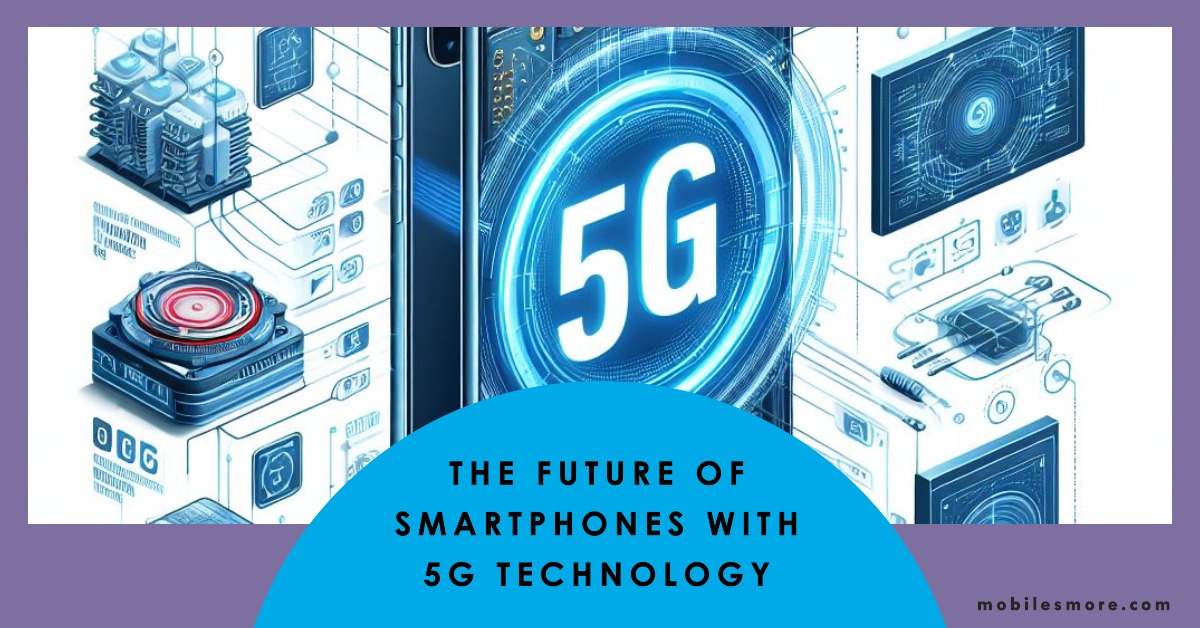Introduction
The fifth generation of wireless technology, or 5G, is expected to revolutionize the smartphone industry in the coming years. 5G promises faster speeds, lower latency, higher bandwidth, and more reliable connections than the current 4G networks. But what does this mean for smartphone users and manufacturers? How will 5G affect the features, performance, and design of smartphones? In this blog post, we will explore some of the potential impacts of 5G on smartphones and how they might change the way we use our devices.
The Benefits of 5G for Smartphone Users
One of the most obvious benefits of 5G for smartphone users is the improved speed and quality of data transmission. According to some estimates, 5G could offer up to 100 times faster download speeds and 10 times lower latency than 4G. This means that smartphone users could enjoy smoother video streaming, online gaming, video conferencing, and cloud computing on their devices. For example, a user could download a full-length HD movie in seconds or play a multiplayer game with minimal lag.
Another benefit of 5G for smartphone users is the increased capacity and coverage of the network. 5G uses a wider range of frequencies and technologies to deliver more data to more devices in more locations. This means that smartphone users could access 5G services in crowded areas, rural areas, and indoors without experiencing congestion or signal loss. For example, a user could watch a live sports event in a stadium or access online services in a remote village.
A third benefit of 5G for smartphone users is the enhanced connectivity and interoperability of devices. 5G enables the Internet of Things (IoT), which is the network of smart devices that communicate with each other and with the cloud. This means that smartphone users could control and interact with various devices such as smart home appliances, wearable gadgets, vehicles, and drones using their phones. For example, a user could adjust the temperature of their home, monitor their health status, or order a delivery using their phone.
The Challenges of 5G for Smartphone Manufacturers
While 5G offers many benefits for smartphone users, it also poses some challenges for smartphone manufacturers. One of the main challenges is the increased power consumption and heat generation of 5G devices. 5G requires more processing power, memory, and antennas to handle the higher data rates and frequencies than 4G. This means that smartphone manufacturers need to find ways to optimize the battery life, cooling system, and design of their devices to avoid overheating or draining the battery too quickly.
Another challenge of 5G for smartphone manufacturers is the compatibility and standardization of the network. 5G is not a single technology but a combination of different technologies and standards that vary by region and carrier. This means that smartphone manufacturers need to ensure that their devices can support multiple bands, modes, and protocols to work across different networks and countries. For example, a device that works on a 5G network in Europe may not work on a 5G network in Asia or vice versa.
A third challenge of 5G for smartphone manufacturers is the cost and availability of the components and infrastructure. 5G requires more advanced and expensive hardware and software to enable the high-performance features and functions of the network. This means that smartphone manufacturers need to invest more in research and development, production, and testing of their devices to meet the quality and safety standards of 5G. Moreover, smartphone manufacturers also depend on the availability and deployment of the 5G infrastructure by the carriers and regulators to offer their services to the consumers.
The Future of Smartphones with 5G
Despite the challenges, 5G also offers many opportunities for smartphone manufacturers to innovate and differentiate their products from the competition. Some of the possible trends and developments that we might see in the future of smartphones with 5G are:
- Foldable phones: With 5G enabling higher-resolution displays and faster data transfer, foldable phones could become more popular as they offer more screen space and versatility for multitasking and entertainment.
- Augmented reality (AR) and virtual reality (VR) phones: With 5G enabling lower latency and higher bandwidth, AR and VR phones could become more immersive and realistic as they offer more interactivity and content for gaming, education, and entertainment.
- Artificial intelligence (AI) phones: With 5G enabling cloud computing and IoT, AI phones could become more intelligent and personalized as they offer more functionality and convenience for communication, productivity, and security.
Conclusion
In conclusion, 5G technology has a significant impact on smartphones as it improves the speed, quality, capacity, coverage, connectivity, and interoperability of the network. However, it also poses some challenges for smartphone manufacturers as it increases the power consumption, heat generation, compatibility issues, cost, and availability of the components and infrastructure. Therefore, smartphone manufacturers need to balance the benefits and challenges of 5G and adapt to the changing needs and expectations of the consumers. 5G technology also opens up new possibilities and opportunities for smartphone innovation and differentiation as it enables new features and functions such as foldable phones, AR and VR phones, and AI phones.

